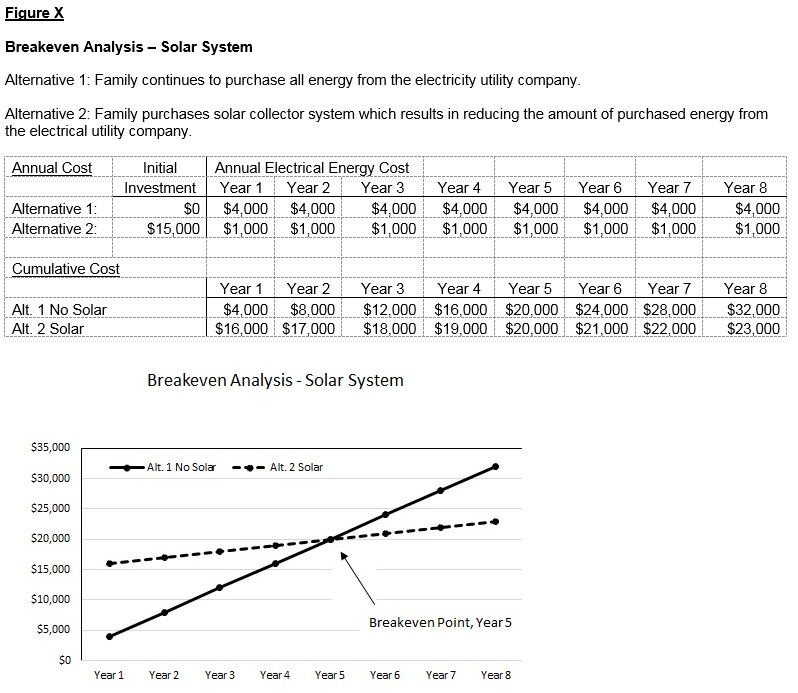By Stephen Kirk, CVS Life, FSAVE, FAIA, LEED AP – Vice President – Education, SAVE International
One of the core competencies of the value methodology is an understanding of “cost analysis” or the economics of a project, product, or process.
Several economic techniques will be addressed over the next few months. These include:
- Payback Period
- Breakeven Analysis
- Return on Investment (ROI)
- Life Cycle Cost Analysis
Last month, the “payback period” was addressed. It is used to answer the question, “How many years does it take for an alternative to pay back the initial investment?”
This month “breakeven analysis” is discussed.
Breakeven Analysis
Breakeven analysis determines the breakeven point (year) when both alternatives have the same cumulative cost.
Using the example from last month, suppose a family is considering adding solar panels to their home to reduce energy costs. The alternatives being considered are as follows:
Alternative 1: Family continues to purchase all energy from the electricity utility company
Alternative 2: Family purchases solar collector system which results in reducing the amount of purchased energy from the electrical utility company
A solar power company informed the family their home, based on its size, would require a 10 KW system. This would cost approximately $2,000 per KW or $20,000 total. Federal and state tax credits would reduce the system cost to about $15,000. Using the solar system, the family is expected to decrease their electrical utility bills for energy by approximately $3,000 per year.
The information is plotted on a graph with costs on the vertical axis and time (in years) on the horizontal axis, the point when both alternative cumulative costs are the same is by definition the “breakeven point.” This is year 5. This is illustrated on the following graph Figure X.

So the family could expect to “breakeven” with the solar investment versus not making the investment in approximately 5 years.
Decision Considerations
As discussed last month, the decision as to which alternative to select has several considerations:
- Does the family have $15,000 to invest?
- Are they willing to wait 5 years before they actually start saving money (after paying for the initial investment)?
- How many years will the solar system last?
- What is the required maintenance on the solar system?
- Will the utility company continue to buy back excess electricity generated from the solar system?
- Is the family also interested in improving the environment by using solar power?
